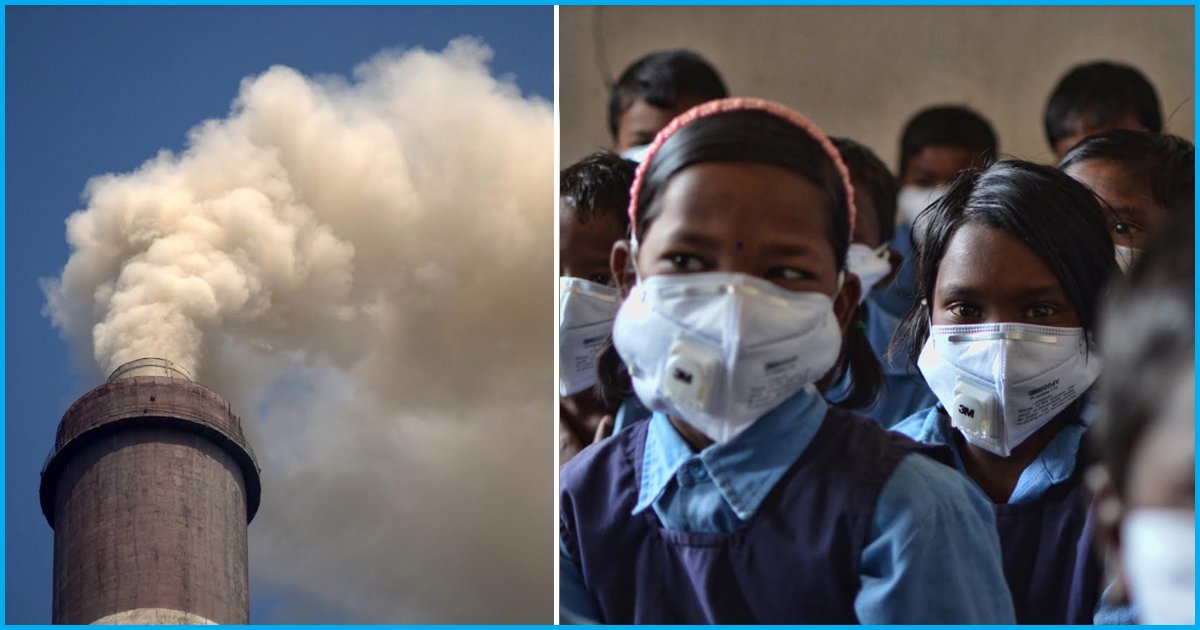
47 Million Children In India Exposed To Deadly Toxic Air: Says Greenpeace India Report
29 Jan 2018 12:26 PM GMT
Airpocalypse-II, a Greenpeace India report released today, analyses the annual average of PM10 particulates recorded for 280 cities which have 630 million citizens, or accounts for 53% of the country’s total population.
A massive part of the population, 580 million (47%), are living in areas where no air quality data is available. The report analyzed data obtained from National Air Monitoring Program, RTI responses from State Pollution Control Boards and annual reports, along with websites of various State Pollution Control Boards.
Out of 630 million, close to 550 million people live in areas exceeding national standards for PM10, including 180 million living in areas where air pollution levels are more than twice the stipulated limit of 60g/m3 which has been set by Central Pollution Control Board.
The report highlights that as many as 47 million children under the age of five years are residing in areas where PM10 levels exceeded CPCB annual limits, including 17 million children under the age of five who are in the areas where pollution levels are more than twice the limit. Children are worst affected in states such as Uttar Pradesh, Rajasthan, Bihar, Maharashtra and Delhi. Together these states are home to 12.9 million children who are below or up to five years of age trapped in bad air exceeding by more than twice the annual standard.
The key findings from the report are:
1.Out of the 630 million Indians covered by the data, 550 million live in areas exceeding national standard for PM10, and 180 million live in areas where the air pollution levels are more than twice the stipulated standards. This includes 47 million children under 5 years of age, living in areas where the standard is exceeded and 17 million in areas where the air pollution levels are more than twice the stipulated standards.
2. The largest numbers of people in areas with more than twice the stipulated levels of pollution are in Uttar Pradesh (64 million), followed by Rajasthan (20 million), Maharashtra (19 million), Delhi (17 million) and Bihar (15 million).
3. Most children under 5 years of age, living in areas where the standard is exceeded more than twice, are also in Uttar Pradesh (6.3 million) and Rajasthan (2.1 million), followed by Bihar (1.7 million), Maharashtra (1.4 million) and Delhi (1.4 million).
4. 580 million Indians live in districts with no air quality data available, including 59 million children under 5 years of age.
5. Real time data is available for only 190 million Indians, or 16% of the population.
6. After Delhi, Maharashtra and Andhra Pradesh have the highest coverage of real-time data, while 23 states have no real time data available to public.
7. The largest number of people living in areas with no data is Uttar Pradesh (133 million), followed by Bihar (89 million), Madhya Pradesh (48 million) and Rajasthan (45 million).
Sunil Dahiya, Senior Campaigner, Greenpeace India said: “The fact that only 16% of our population has real time air quality data available, portrays how in-humanly we are responding to the national health crises in front of us. Even the manual data collected for 300 cities/towns across the country is not shared in a timely manner and in a format which can be accessed and understood easily by general public.”
Ranking of cities based on annual average of PM10 levels reveals- Delhi as the worst polluted city with 290μg/m3 followed by Faridabad, Bhiwadi, Patna with annual average ranging from 272μg/m3, 262μg/m3 & 261μg/m3 respectively. Surprisingly, Dehradun in Uttrakhand, once thought to be a salubrious preserve of retiring elite, also made it to the top 10 list of worst polluted cities with 238μg/m3 annual average of PM10. The annual average of PM10 levels for the top 20 most polluted cities are between 290μg/m3 and 195μg/m3, for the year 2016.
Dahiya further added “Delhi remained the worst impacted city with annual PM10 levels exceeding approximately 5 times the national ambient air quality standards. The fact that less than 20% Indian cities are complying with the national, or CPCB, standards sadly points to the lack of workable, robust and timely action plans so far.”
The report adds that most polluted cities are spread across the Indo-Gangetic basin with southern cities being slightly better off than their northern counterparts. However, cities in south also need focused and time bound action plan to bring air quality to achieve the WHO standards, showing a pathway for other cities across India.
The National Clean Air Program recently announced by the Ministry of Environment, Forest and Climate Change, first needs to be comprehensive, systematic with time bound plans that have fixed accountabilities and secondly, it needs to be made public soon for it to come into action, which will also help in having active participation of the general public and all layers of the government to take the idea to the ground level along with tackling myriad sources of pollution daunting the quality of air through vast parts of the country.
Way Forward Suggested in the Airpocalypse-II Report
- Institute robust monitoring mechanism of air quality across the country,
- Real time data sharing for data from Continuous Ambient Air Quality Monitoring System (CAAQS) and near real-time data sharing for manual stations with public on various platforms.
- Health advisory and ‘red alerts’ for bad-air days in order to alert public to take precautionary steps to protect their health and the environment and directions to the industries to reduce their pollution emission load.
- Measures like shutting down schools, reduction of traffic, shutting down power plants and industries etc. should automatically come into force as soon as air quality deteriorates beyond a specified level and takes alarming proportions.
- Use of data as a basis to fine tune pollution reduction strategies that must, inter alia, seek to improve public transport and reduce use of fossil fuel by vehicles, generators and water pump sets that are commonly used by cultivators in the farm sector.
- Stricter enforcement of laws to take polluting vehicles off the roads. Introduction of higher fuel standards like Bharat VI for motor vehicles.
- Enforcement of stiff emission regulations and improved efficiency for thermal power plants and industries.
- Moving from diesel generators to rooftop solar power backup and increased use of clean renewable energy.
- Incentivizing use of electric vehicles.
- Dust removal from roads or covering pavement by green cover and regulation of construction activities.
- Ban on waste burning and
- Find sustainable alternatives to the biomass burning as soon as possible.
These strategies should be formalized into a time bound action plan with clearly defined targets and penalties in case of non-compliance so as to ensure accountability. While some actions might need to be city or region-specific, these ought to be a part of a broad range of nationally applicable actions with active public participation.
To add your voice to demand a solution and download the report, click here: act.gp/2nlycHX
 All section
All section













